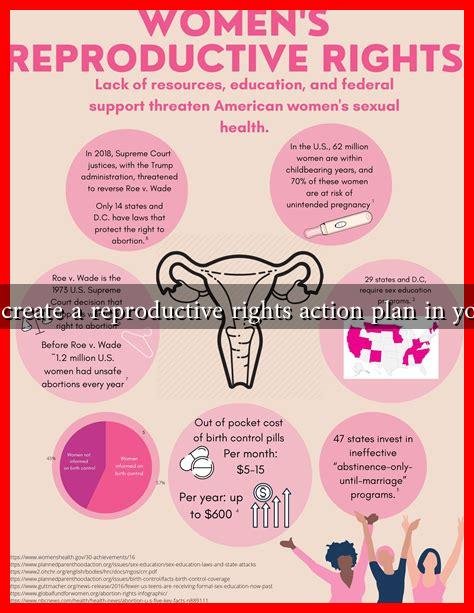-
Table of Contents
How to Create a Reproductive Rights Action Plan in Your Area
Reproductive rights are fundamental human rights that encompass a range of issues, including access to contraception, safe and legal abortion, and comprehensive sex education. In recent years, the landscape of reproductive rights has faced significant challenges, making it crucial for individuals and communities to take action. This article will guide you through the steps to create a reproductive rights action plan tailored to your area.
Understanding the Landscape of Reproductive Rights
Before diving into action planning, it’s essential to understand the current state of reproductive rights in your area. This involves researching local laws, available services, and community attitudes. Here are some key points to consider:
- Local Legislation: Investigate state and local laws regarding abortion, contraception, and sex education. Websites like the Guttmacher Institute provide comprehensive data on state policies.
- Healthcare Access: Identify local clinics and healthcare providers that offer reproductive health services. Are there barriers to access, such as distance, cost, or lack of insurance?
- Community Attitudes: Conduct surveys or focus groups to gauge public opinion on reproductive rights. Understanding community sentiment can help tailor your action plan effectively.
Setting Clear Goals
Once you have a solid understanding of the landscape, the next step is to set clear, achievable goals for your action plan. Consider the following:
- Awareness Campaigns: Aim to educate the community about reproductive rights and available services.
- Advocacy for Policy Change: Focus on lobbying for changes in local laws that restrict reproductive rights.
- Support Services: Establish or enhance support services for individuals seeking reproductive health care.
Building a Coalition
Creating a successful action plan requires collaboration. Building a coalition of like-minded individuals and organizations can amplify your efforts. Here’s how to get started:
- Identify Stakeholders: Reach out to local health organizations, women’s rights groups, and community leaders.
- Host Meetings: Organize regular meetings to discuss goals, share resources, and strategize.
- Leverage Social Media: Use platforms like Facebook and Twitter to connect with potential allies and spread your message.
Implementing Your Action Plan
With your goals set and coalition formed, it’s time to implement your action plan. Here are some strategies to consider:
- Educational Workshops: Host workshops to inform the community about reproductive rights and available resources.
- Advocacy Days: Organize events where community members can meet with local legislators to discuss reproductive rights.
- Fundraising Events: Plan events to raise funds for local clinics or advocacy groups that support reproductive rights.
Measuring Success and Adapting
To ensure your action plan is effective, it’s crucial to measure its success and adapt as needed. Consider the following:
- Feedback Mechanisms: Create surveys or feedback forms to gather input from participants and community members.
- Track Progress: Monitor changes in local policies, community engagement, and service accessibility.
- Be Flexible: Be prepared to adjust your strategies based on feedback and changing circumstances.
Conclusion
Creating a reproductive rights action plan in your area is a vital step toward ensuring that everyone has access to the reproductive health services they need. By understanding the local landscape, setting clear goals, building a coalition, implementing effective strategies, and measuring success, you can make a meaningful impact. Remember, advocacy is a continuous process, and staying informed and engaged is key to fostering a community that supports reproductive rights for all.
For more information on reproductive rights and advocacy, consider visiting the Planned Parenthood website, which offers resources and support for individuals and communities alike.

